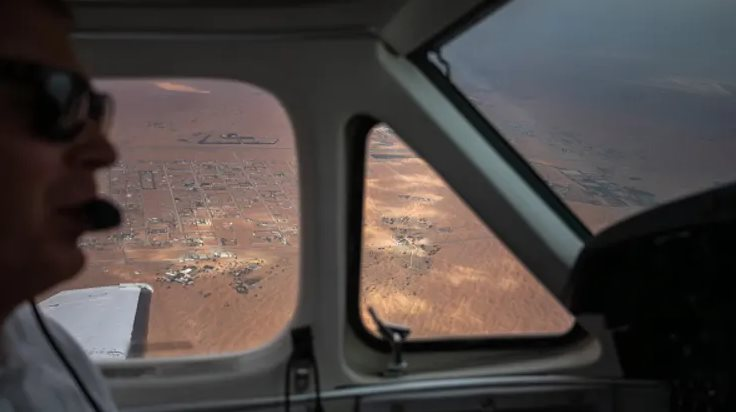Planting 3,000 Tons of Green Vegetables in the Desert: UAE’s Game-Changing Cloud Seeding Project

The increasing global temperature is putting pressure on the Middle East, a region highly vulnerable to the impacts of climate change. One significant challenge faced by these countries is the issue of water scarcity. The United Arab Emirates (UAE) receives an average annual rainfall of less than 200 mm, in stark contrast to London’s average of 1,051 mm and Singapore’s 3,012 mm.
With summer temperatures reaching up to 50°C and 80% of the country’s landscape covered by desert terrain, extreme heat exacerbates the water scarcity problem and limits agricultural productivity in the UAE. The United Nations predicts that by 2025, 1.8 billion people worldwide will face absolute water scarcity, with the Middle East being one of the most water-stressed regions, with approximately 83% of the population at high risk of water scarcity.
In the face of these core challenges, Gulf countries have launched a groundbreaking project to address this issue.
Cloud Seeding Project
In the 1990s, the UAE introduced a cloud seeding method to enhance rainfall. Cloud seeding is a process of increasing precipitation from clouds in order to improve water scarcity in arid regions.
In the early 2000s, UAE Vice President Sheikh Mansour Bin Zayed Al Nahyan allocated $20 million (approximately 494 billion VND) for cloud seeding research. The UAE collaborated with the US National Center for Atmospheric Research (NCAR) in Colorado and NASA to implement this program.
The government established a specialized task force called the National Center of Meteorology (NCM) in Abu Dhabi, where over 1,000 hours of cloud seeding are conducted each year to enhance rainfall. The NCM has a network of radars and over 60 weather stations to manage cloud seeding operations and closely monitor atmospheric conditions.

How Does Cloud Seeding Work?
Weather forecasters at the center are able to observe precipitation in the clouds and identify which clouds are suitable for seeding in order to increase the chances of rainfall.
Once the appropriate cloud is identified, they instruct pilots to fly specialized aircraft equipped with cloud seeding devices mounted on the aircraft wings. These devices contain moisture-absorbing substances, typically hygroscopic salts, which can absorb water vapor from the air and form water droplets. When ignited, hygroscopic flares release fine salt particles that can absorb water vapor and develop into raindrops. When the clouds become too heavy, rain is formed.
During a visit to the NCM, Director General Abdulla Al Mandous stated that the technology is scientifically based and emphasized that the Abu Dhabi program does not use silver iodide, a material that has been criticized for its potential environmental and human health hazards.
The NCM assures that they do not use any harmful chemicals in their operations. “Our specialized aircraft only use natural salt without any harmful chemicals.”
Director Al Mandous revealed that the center has started producing its own cloud seeding material called nano-material, a type of fine salt coated with titanium dioxide, which is more effective than what they are currently using. He stated that it would be three times more efficient than hygroscopic flares. This material is currently being tested in various areas in the UAE and the US.
According to CNBC

